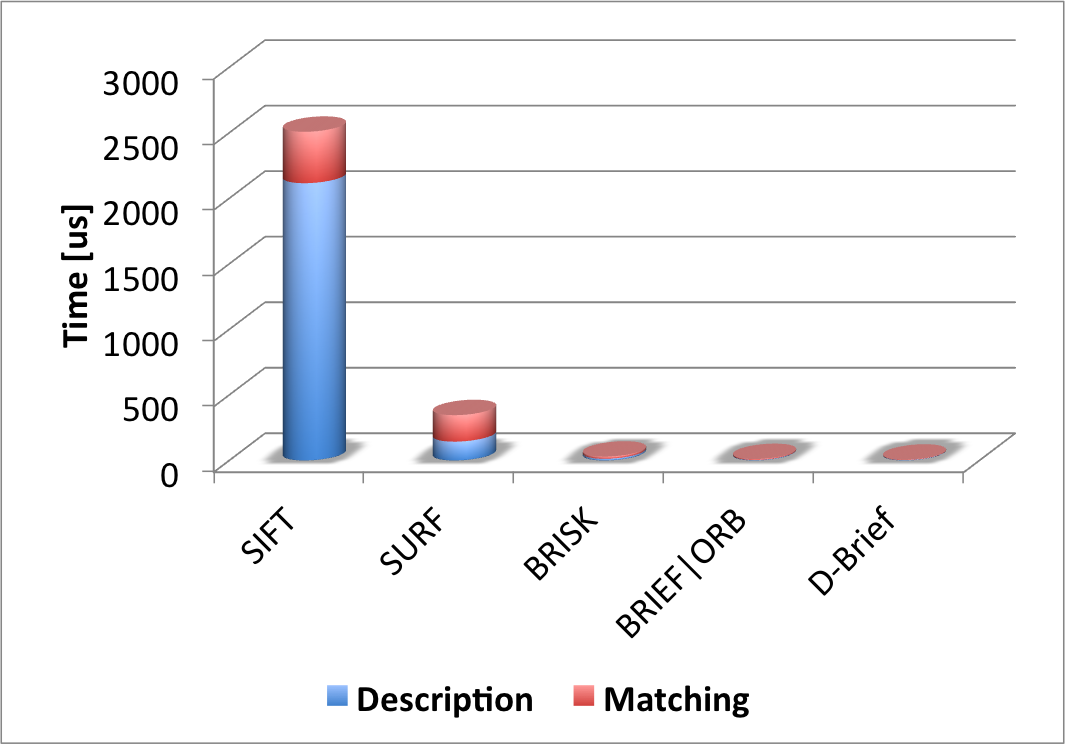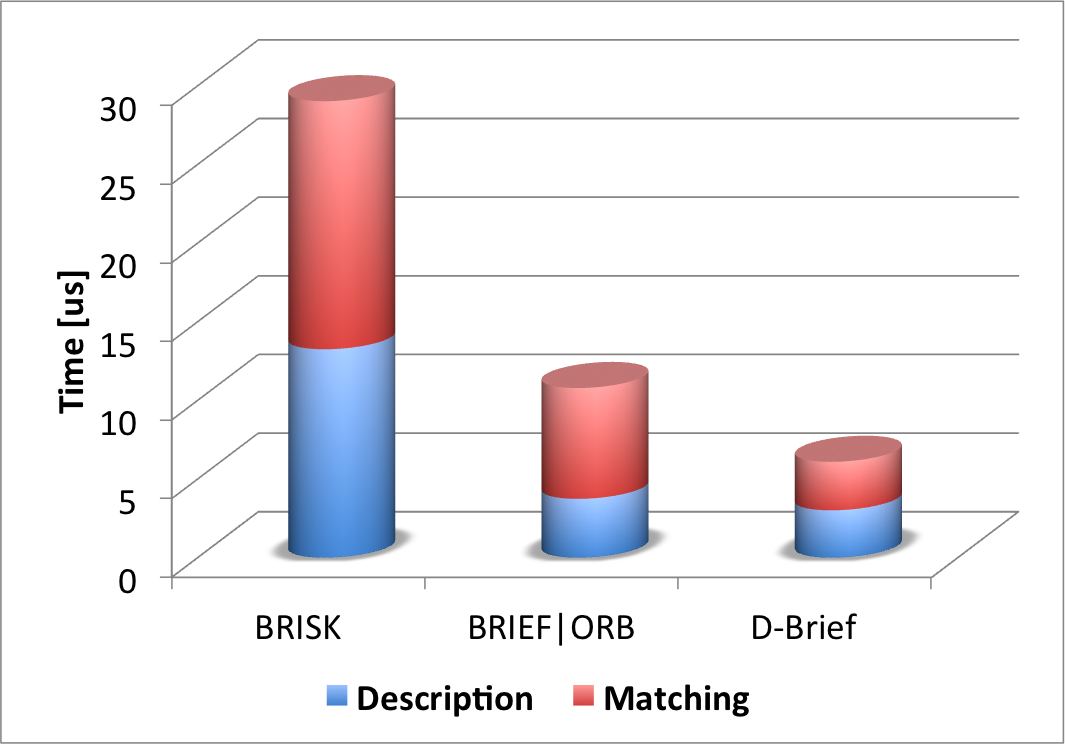D-Brief is a binary local feature descriptor which relies on discriminative projections trained to be computed efficiently from a small set of simple filters (e.g. box filters. With only 32 bits per descriptor, D-Brief outperforms the state-of-the-art binary descriptors in terms of both accuracy and efficiency, while being over an order of magnitude shorter.
How do we build our descriptor? We first train a set of discriminative projections using Linear Discriminant Analysis and then we approximate the projections as a linear combination of a few elements from a predefined dictionary D of simple elements (e.g. box filters) using sparsity constraints. See the paper for details.
Example approximation:
Results
Accuracy. Comparing D-Brief with the state-of-the-art binary descriptors on standard Liberty and Notre Dame datasets. The plots show the ROC curves for binary descriptors D-Brief, BRIEF, ORB and BRISK. We also show the results for floating point and much more complex to compute SIFT and SURF. In parentheses: Number of floating point (f) or binary (b) coordinates per descriptor. D-Brief outperforms its binary competitors while being almost order of magnitude shorter.
 |
 |
Speed. Description and matching timings per descriptor for SIFT, SURF, BRISK, BRIEF, ORB and D-Brief with box filters used to approximate discriminative projections. Results computed for 3000 descriptors extracted from the wall1.ppm image of Mikolajczyk dataset and averaged over 300 runs on a MacBook Pro with an Intel i7 2.66 GHz CPU and with a POPCNT instruction enabled.
 |
 |
Software
Note on Efficient Distance Computations. Computing the Hamming distance between two binary vectors corresponds to a simple bitcount on the result of a binary XOR operation between the vectors. The bitcount becomes particularly efficient on CPUs supporting the POPCNT instruction: The first in this series are Intel’s Bloomfield (SSE 4.2) and AMD’s Phenom (SSE 4a). If your CPU supports this instruction, you can safely; enable -msse4.2 (or -msse4a, respectively) in test_app/Makefile. This should give you a 10- to 15-fold speed increase for matching. If enabled despite SSE 4.2 (SSE 4a, respectively) is not supported, you will get an Illegal instruction. On linux, try grep sse /proc/cpuinfo and look for sse4_2 (or sse4a, respectively) to find out whether or not POPCNT is available on your machine.
Download: DBrief demo (C/C++), Train-and-test code with sample data (Matlab)
License: GPL v2
Dependency: OpenCV v2.0 or higher
References
Please note that the publication lists from Infoscience integrated into the EPFL website, lab or people pages are frozen following the launch of the new version of platform. The owners of these pages are invited to recreate their publication list from Infoscience. For any assistance, please consult the Infoscience help or contact support.
Efficient Discriminative Projections for Compact Binary Descriptors
2012. European Conference on Computer Vision, Florence, Italy, 2012. p. 228–242. DOI : 10.1007/978-3-642-33718-5_17.Contacts
| Vincent Lepetit | [e-mail] |
| Tomasz Trzcinski | [e-mail] |
